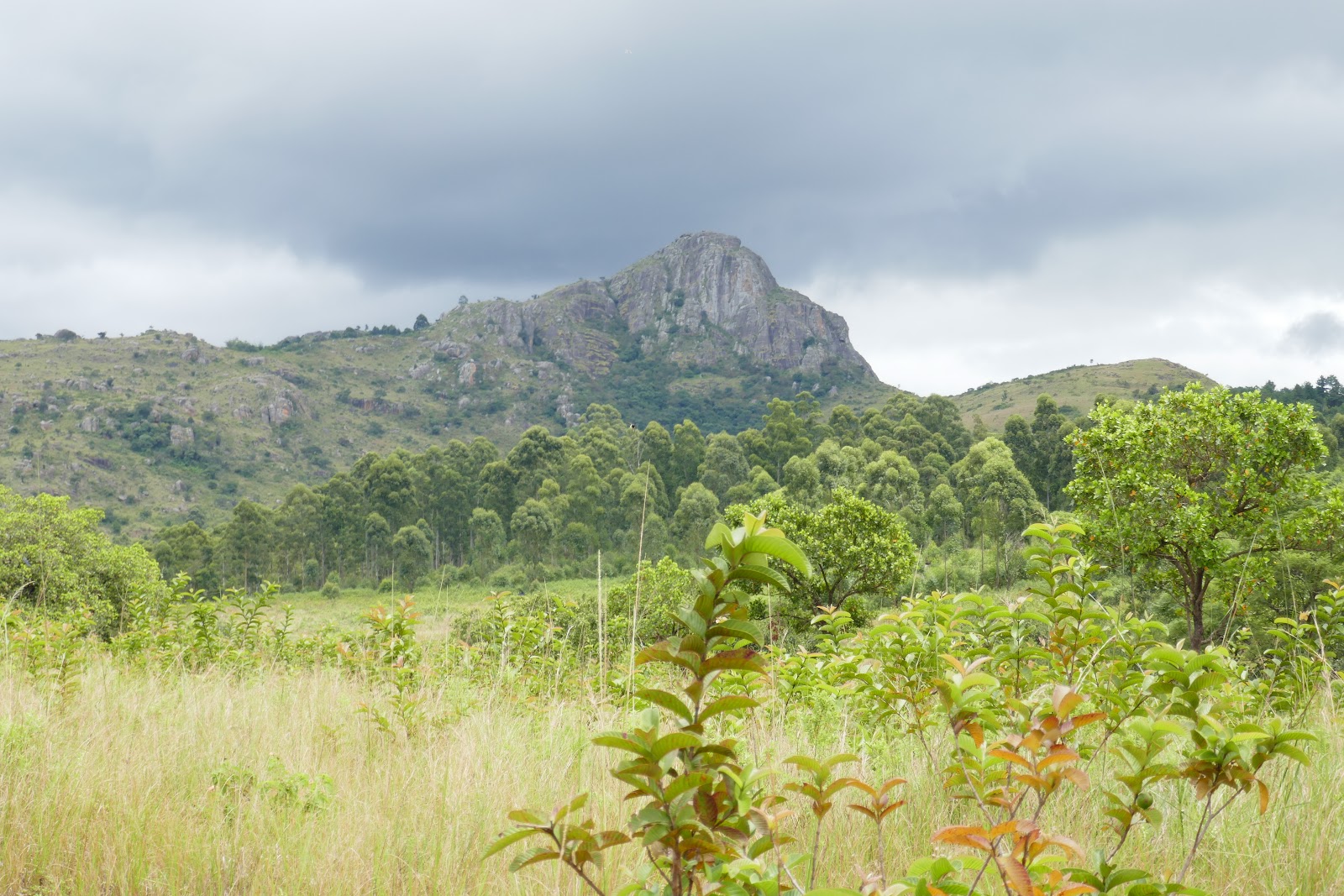An old friend had never been on Safari before, so we hopped on a flight to Johannesburg in South Africa. After renting a car at the airport (which always takes an hour for some reason), we headed east towards eSwatini (1), gaining altitude as we went. After crossing the Swazi border, we headed north towards the Nsangwini Bushman painting site, with cave paintings dating to 4,000 years ago. The route passes mountainous Malolotja National Park, then over Maguga Dam (2), which provides hydropower to the region.
While there was a sign for Nsangwini just past the dam, we were unable to find the turn for the dirt road down to the cave (3). The info center back at the dam called and told us the site was closed for the day. Back to the main highway and on to Mlilwane (3) Reserve, arriving about 5:00 (4).
The area surrounding the hilltop lodge at Mlilwane (5) is designated as a location for breeding populations of various antelope species being reintroduced to eSwatini. These species include red hartabeest and waterboks, with the distinctive white ring on their rumps. Ruth was in charge of the lodge and made excellent yeasty rolls and wildebeest sausage at dinner. A ranger came by and pointed out the Swazi Royal Palace in the valley below (6).
Breakfasting the next day, we saw blue and red duikers, among the smallest of the antelope species, who seemed to enjoy the grass at the lodge's garden. The blue duiker's tail was swishing so fast, it was a blur. An enormous male waterbok suddenly appeared from the woods to munch on some corn left out on a stone platform (we had originally thought for the birds). What magnificent horns on the creature.
We hiked further up the hill to a rocky outcropping offering fine views of grazing herds on the reserve below (7) and the Ezulwini Valley beyond. Driving through the reserve's plains toward later, we encounterd nyalas, wildebeest, and a dazzle of Zebras. Near the exit gate, we encountered some baby warthogs and a small group of blessbok (8).
(1) Until 2019, the country was called Swaziland. "Eswatini" is equivalent to Swaziland in siSwati, the local language.
(2) A dam in southern Africa refers to the structure itself, plus the body of water behind the dam.
(3) The map I had was sponsored by Kentucky Fried Chicken. While the 11 KFC locations in the country were marked accurately in the map, the location of the cave art was less accurately plotted.
(3) The name means "little fire" in siSwati for the frequent fires set by lightning on the property (a).
(a) A cattle ranch was established here in the early 1900s by a British soldier who had fought in the Boer War. His son, Ted Reilly, converted the ranch to a nature preserve to reintroduce African animals that were no longer present in Swaziland.
(4) The gate closes at 6:00, and we needed to drive inside the reserve to the hilltop lodge before sunset. Having rained this afternoon (and the road being infrequently used the last few years due to Covid) it was a slippery and bumpy ride up the hill in our little hatchback.
(5) The lodge is the former home of the Reilly family, the ranch owners; absolutely charming.
(6) King Mswati III is one of the few remaining absolute monarchs in the world.
(7) There are no predatory animals at this reserve, so the animals can graze unmolested.
(8) So-called because of a white cross on their noses.
At Malotja Nature Reserve in the Highveld
Waterbok near Reilly's
Female Waterbok in the garden
Blue duiker, with trailhead in the background
Red Duiker
View of reserve from atop Reilly's Rock
The lodge, former rancher's home
Termite mound
At Mlilwane
Female Kudu on alert
Blessbok near the gate


















No comments:
Post a Comment